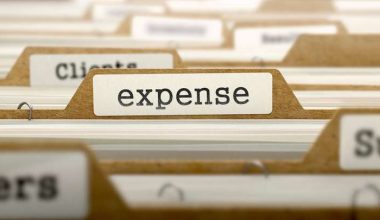Job analysis allows businesses to completely comprehend the nature of a job. It aids in the formulation of improved job descriptions and effective training and development programs, contributes to a safer work environment and more effective workforce planning, and is critical in performance management.
Job analysis touches on several critical HR responsibilities, hence it must be done correctly in order to acquire accurate and reliable data. In this essay, we will go over all you need to know about job analysis. Let us get started!
What is Job Analysis?
A job analysis is a methodical process of identifying and defining the specific responsibilities, needs, and nature of a job. It entails breaking the job down into smaller pieces, collecting data on each unit, and then analyzing the data to determine the skills and abilities required for the task.
A key principle in job analysis is that you analyze the job rather than the person executing the job. Even though some job analysis approaches to acquire data from workers, the end result is a description of the work, not the people.
To bring out all of the important information and details of a job, a job analysis should focus on the following factors.
- Duties and tasks: The type, frequency, and complexity with which specified duties and tasks are performed.
- Environment: Temperatures, scents, and unfriendly people are examples of work environments.
- Tools and equipment: Tools and equipment used to successfully complete the job.
- Relationships: Interpersonal and interpersonal relationships.
- Requirements: The knowledge, skills, and abilities needed to complete the job successfully.
Types of Job Analysis Data
There are three kinds of job analysis data:
- Work activities: Information about the specific activities that comprise a job.
- Worker attributes: Information on the qualities that employees require to execute their jobs.
- Work context: Information about the job’s internal and external environments.
Why is a Job Analysis Important?
#1. Human Resources Planning
A qualitative part of personnel needs is job analysis, which analyzes job requirements in terms of skills, attributes, and other human characteristics. This makes it easier to divide labor into distinct occupations.
#2. Selection, Recruitment, and Placement
To employ a good individual for the job, it is critical to understand the job criteria as well as the traits of the person who will be doing the job. This information comes from the job description or job description and assists management in tailoring the job requirements as closely as feasible to the attitudes, talents, and interests of employees, etc.
#3. Development and training:
Job analysis establishes acceptable standards of job performance. Aids in the management of learning and development programs.
#4. Job Assessment
Job analysis serves as the foundation for job evaluation. A job appraisal’s objective is to establish the relative value of the job, which in turn helps decide job compensation.
#5. Performance Evaluation
Data from job analysis establishes a defined standard of performance for each job. Employee performance can be measured objectively against the job performance standard.
#6. Designing a Job
Industrial engineers can utilize job analysis information to develop jobs by conducting a thorough examination of the job elements.
#7. Health and Safety
Management can take corrective actions to ensure worker safety and lower the risk of various hazards in order to eliminate hazardous conditions.
#8. Promotions
The majority of the job analysis is based on effective policies. Effective policies for promotions and transfers can be developed.
#9. Employment Advice
Job description, which is based on job analysis, assists aspirants in determining the job for which they have the requisite ability and abilities.
#10. Workplace Relations
Job analysis is the foundation for resolving disputes that may develop as a result of the quality of performance required of workers.
How Do You Go About Conducting a Job Analysis?
#1. Obtain information about a job.
Current staff should be observed and interviewed. Encourage staff to carry out their obligations and be as explicit as possible when describing them. Read the instruction manual or literature that explains your current situation. Examine your existing job description against what your employees are saying and doing. Keep track of results by department or by individual position. Create a separate account for each task and expertise required for the job.
#2. Determine the significance of each task and ability.
Once you have determined which talents are required to complete each assignment, you can rank the difficulty of each task and skill. Determine the most important abilities of each region. Take note of which talents are entry-level and which demand more experience. You may have different thoughts about this job because you thought it was an important component of the job.
#3. Investigate industry standards.
In your job analysis, look for status data to ensure you are connected to your current employees. Use information from government publications and corporate groups to validate your findings. Seek expert assistance on the subject who can clarify the duties you must complete in order to execute your job. Compare your network and data to that of other companies.
#4. Job descriptions and standards should be revised.
Make a list for each job and skill after you have identified and uncovered the most important qualifications required to execute the job. Use this to modify an existing job description or to create a new one based on your analysis. Create a set of criteria for each position that incorporates feedback from your staff as well as your own work observations. Include expectations that you may or may not have met, but that are based on professional guidelines gleaned from your investigation.
#5. Make modifications based on data.
Examine the entire organization. Determine whether the correct task is assigned to the correct task based on the analysis. If you discover that a job in one department is better suited to another team, transfer the tasks to another job. You may also discover that some departments handle a greater volume of work than others. You can utilize job analysis data to identify strategies to transfer job responsibilities based on each job’s capabilities.
What Is the Difference Between a Job Analysis and a Job Description?
Job analysis can be defined as the process of acquiring information on a specific job. This data comprises knowledge, skills, and capacities for productive work. It is beneficial in the preparation of job descriptions and job descriptions.
A job description is a document that specifies the functions, responsibilities, duties, powers, and officers associated with the job.
In layman’s words, job analysis refers to an in-depth assessment and appraisal of a certain job. As a result, a job description is a statement that describes a certain job.
What are the Parts of a Job Analysis?
#1. Job Position
The job position and the employee who holds that role in the organization are referred to as the job position. The organization’s remuneration system is built around job status. High-paying occupations and job holders earn better returns than lower-paying employment.
#2. Job Description
Each circumstance is distinct from the others since it involves a unique set of tasks and obligations, for example. Experience, competence, and knowledge. These activities, obligations, functions, and responsibilities are described in depth in the job description.
#3. Job Value
Work value is the calculation of the worth of work in an organization. In other words, job value is an estimate of how much the job contributes to the organization’s ultimate goal.
What Methods Are Available for Conducting a Job Analysis?
#1. Interviews
One method for creating an appropriate job description is to ask an employee for details about their job. Employers will inquire about specific responsibilities as well as a breakdown of the functions performed by employees in a certain position.
#2. Observations
An employer may also opt to observe employees as they perform their jobs, noting the activities they complete as well as the abilities required for those tasks. Observations perform well for processes involving physical tasks and product outcomes.
#3. Surveys
Surveys are used to determine how frequently a task is accomplished or how frequently a skill set is used. These surveys can be highly organized forms in which employees use a scale to answer job-related questions. Surveys can also be used more casually to ask staff open-ended questions.
#4. Work Logs
Employers may seek a written account of daily labor for a specific time period. This enables an employee to provide a detailed description of their usual job activities as well as the times required for each task.
When Should a Job Analysis Be Carried Out?
As the first phase in the recruitment process, a job analysis should be performed. Writing an analysis clarifies your needs and expectations. It also gathers the information required to build a job description.
What Are the Drawbacks of Job Analysis?
#1. It takes time
The most significant disadvantage of the job review process is its length. This is a significant disadvantage, particularly when employment changes regularly. This accentuates personal bias: if the supervisor or analyst works for the same company, the process may include their personal preferences and dislikes. This is a significant impediment to the collection of reliable and accurate data.
#2. Excessive human effort
The process necessitates a significant amount of human labor. Because each job requires unique information and there is no fixed pattern, custom data must be gathered for each job. To collect and record order-related data, the process must be carried out independently.
#3. Inadequate Skills
It is a waste of corporate resources if the analyst is unaware of the aim of the job analysis process and lacks the necessary abilities to carry it out. To gather reliable data, you must be trained.
#4. Inadequate mental abilities
Finally, mental talents such as intelligence, emotional traits, knowledge, competence, mental and endurance are intangible things that cannot be directly viewed or evaluated. People behave differently in various situations. As a result, general benchmarks for mental talents cannot be established.
Who Performs a Job Analysis?
The Human Resources department of the employer or a certified Job Analyst/Consultant may undertake the job analysis.
Examples of Job Analysis
Let us look at two examples of how a full job analysis might appear in practice.
#1. Example of Sales Job Analysis
| Job title | Sales Representative |
| Classification | Full-time employee |
| Department | Sales |
| Location | Mill Creek, Washington |
| Pay grade | Level I |
| Job requirements | |
| Summary of position | Ensures current customers have the products and services they need. Identifies and pursues new markets and customer leads and pitches prospective customers. Follows a sales process that involves contacting prospects, following up, presenting products and services, and closing sales. Creates weekly, monthly, and quarterly sales reports and projections. Meets annual sales goals. |
| Job duties | – Generate leads– Create client lists– Contact prospects and negotiate with them– Follow up with prospects and existing customers– Close sales– Maintain client records– Create and present sales reports |
| Skills | – Desktop office programs proficiency– Proficiency in CRM– Good customer service and interpersonal skills– Good communication skills |
| Reporting structure | – Reports directly to the national sales manager– No one reports to this position– Must attend yearly sales meeting |
| Employee requirements | |
| Education | – Bachelor’s degree in business, finance, marketing, economics, or a related field– At least five years of sales experience |
| Skills | – Adapts to changing customer needs and expectations– Adapts to market changes– Can confidently make hundreds of cold calls a week– Able to work comfortably in a fast-paced environment |
| Environment | – High-volume office setting– Sitting at a desk for most of the day– Travel to meet clients |
| Certifications and licenses | – Washington state driver’s license– National Association of Sales Professionals’ Certified Professional Sales Person– American Association of Inside Sales Professionals’ Certified Inside Sales Professional |
| Success factors | |
| Increase sales | – Grow referral-based sales by 10% per year– Grow market channel penetration by 12% in the first year |
| Grow sales department | – Train at least one new junior sales associate |
#2. Entry-level job analysis example
| Job title | Assistant Editor |
| Classification | Full-time employee |
| Department | Book production |
| Location | Malibu, California |
| Pay grade | Level III |
| Job requirements | |
| Summary of position | Assists the Editor-in-Chief and publisher in developing and delivering manuscripts. Reviews and proofreads manuscripts. Conceptualizes and pitches stories. Supports the Editor-in-Chief and coordinates with other departments, such as production and sales. Writes press releases and markets new books. Finds new authors. |
| Job duties | – Perform editorial duties to support the Editor-in-Chief– Find and contact new authors– Review and make changes to documents– Attend signings, readings, and book launches |
| Skills | – Desktop publishing software proficiency– Good time management– Ability to multitask– Good interpersonal skills– Good communication skills |
| Reporting structure | – Reports to the Editor-in-Chief and publisher– No one reports to the Assistant Editor |
| Employee requirements | |
| Education | – Bachelor’s degree in English, literature, journalism, or a related field |
| Skills | – Ability to read fast and identify errors and flow– Strong writing and reading skills– Ability to work on multiple projects simultaneously– Thriving on deadlines |
| Environment | – Fast-paced office setting– Sitting at a desk for most of the time– Travel to book events 50% of the time |
| Certifications and licenses | – California state driver’s license– A member of the American Copy Editors Society |
| Success factors | |
| Improve efficiency | – Reduce time to complete projects by 15%– Identify innovative programs to improve editing |
| Business development | – Find at least ten new good authors every year– Train interns |
The outcome of your job analysis does not have to be identical to the sample job analysis above. Make changes to make it more relevant to your organization and position.
Conclusion
Job analysis is a clever and tried-and-true technique with a distinct role in Human Resource Management. Indeed, a well-executed job analysis will have an impact on business outcomes. Through focused training and effective performance management, HR professionals may use this data to make better hiring decisions and assure higher on-the-job performance.
To succeed, however, you must adopt a systematic approach to covering all of the key components of the job, as explained in the process stages discussed.
Job analysis is also a time-consuming technique. Conducting a full job analysis will need filling out questionnaires or interviewing tens of people, which will be an expensive exercise. You should constantly consider whether a complete job analysis is worthwhile. You must also consider the continually changing nature of work – albeit this may be a cause to conduct the job analysis in the first place.
Related Articles
- TASK MANAGEMENT: What Is It, Software, Skills & Best Apps
- TASK MANAGEMENT TOOLS: 24 Best Task Management Tools for Teams [2023]
- TASK MANAGEMENT SYSTEM: Best Free and Paid Options In 2023
- MARKET ANALYSIS: What It Is and Complete Guide on How to Conduct It
- TIME MANAGEMENT: Skills & Tips On Effective Time Management






